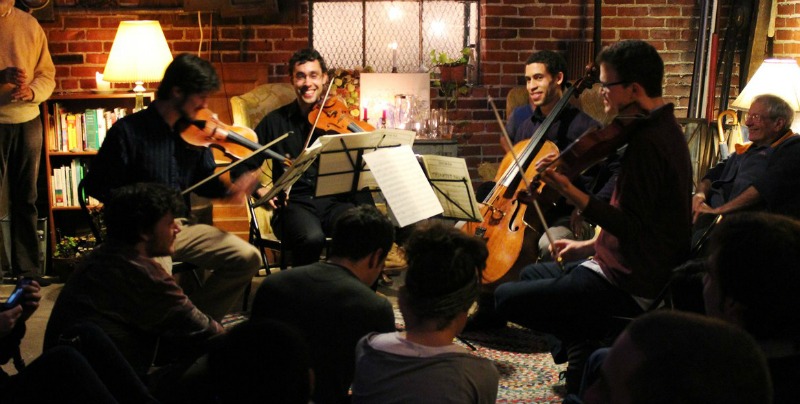This Week: Live classical music on demand, in your living room!… Is being always connected killing our ability to follow complex art?… The Smithsonian Wants your money to preserve Wizard of Oz ruby slippers… Researchers say it’s probably alright to let babies play with screens… Alvin Ailey company engages audiences in its second home in a charged way.
- An Uber For Classical Music? Arts organizations are looking to reach audiences in new ways, and each week brings news of more experiments. So how about live music on demand? Entrepreneurs have figured out a kind of Uber-for-classical-music. On paper, at least the idea seems to be a win for all parties – musicians, clients… Here’s how it works: “Professional musicians and those studying in conservatories can upload samples to a Groupmuse profile, which an internal team approves. Next, the Groupmuse team pairs performers with hosts who volunteer to host strangers and musicians in their home: a soloist for 10 people, a quartet for a house that can fit 50 listeners. Around 20 Groupmuse shows happen across the country every week, mostly in Boston, New York, Seattle and the Bay Area. Groupmuse suggests each attendee pays $10 for the show; musicians go home with an average of $160.”
- Smithsonian: Give Us Money To Save Dorothy’s Ruby Slippers! The Smithsonian has launched a Kickstarter campaign to raise $700,000 to restore and preserve Dorothy’s slippers from the Wizard of Oz. “This campaign would keep the shoes’ color from deteriorating, and the money will go toward a technologically advanced display case to preserve them for future generations.” So why is the American government’s museum begging for money to do something that ought to be part of the museum’s mandate? “Even though the Smithsonian’s museums are federally funded, the institution still solicits private and corporate contributions for major projects if it isn’t covered by their budget. In fact, this is the Smithsonian’s second Kickstarter campaign; in 2015, the National Air and Space Museum raised $700,000 to preserve the spacesuit that Neil Armstrong wore when he walked on the moon.”
- Sure, Let Your Babies Play With Screens. Why Not, Ask Researchers? Parents have always worried about their kids watching too much TV. Then they worked about letting children getting addicted to iPads and phone screens. The advice from experts was to keep screens away from children under two. But “over the past decade, an increasing number of researchers, many educators, and not surprisingly, children’s media developers have pointed to a growing pile of studies that show how children, even at very young ages, can benefit from using media when it catalyzes conversation and is designed for learning.”
- How To Engage More People In Dance? Ailey Has An Idea: In Kansas City, the Alvin Ailey company has a second home, which it’s using not just to give performances but to engage its community on bigger issues: “For the third year in a row, the organization will convene a day-long symposium and town-hall meeting on Race, Place and Diversity. Over the last two years, a few hundred people have gathered for lunch, followed by break-out sessions and panels and an evening town hall to try to tackle these tension-filled topics.”

[…] What We Learned About Audiences This Week: An Uber For Classical Music? Threats To Our Attention Spa… This Week: Live classical music on demand, in your living room!… Is being always connected killing our ability to follow complex art?… The Smithsonian Wants your money to preserve Wizard of Oz ruby slippers… … read more AJBlog: AJ Arts Audience Published 2016-10-23 […]